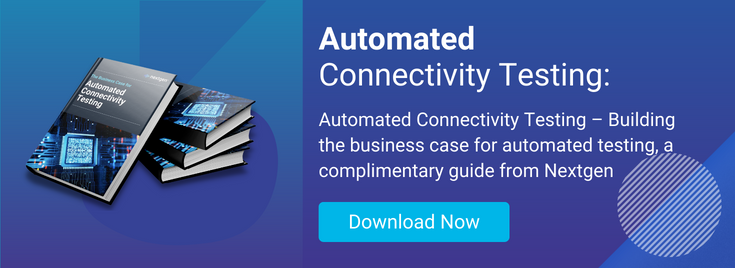Why Bluetooth Is Ideal For The Industrial IoT

As Industry 4.0 continues to gain momentum, the industrial Internet of Things (IoT) is becoming increasingly critical for businesses to remain competitive and meet the production demands of their supply partners and market.
Central to the effectiveness of the IoT for product manufacturers is connectivity and interoperability with other devices and technologies in the ecosystem – efficient production systems depend on the ability of devices to communicate with each other seamlessly, securely, and in real time. And not only this, to do so in a way that securely protects the flow of data, integrates with existing systems and infrastructure, and ensures the easy deployment of firmware updates.
In this context, Bluetooth technology has emerged as a popular communication protocol for industrial and manufacturing IoT devices due to its low power consumption, cost effectiveness, ease of use, and other benefits.
In this article, we’ll explore these advantages and how Bluetooth could benefit your industrial IoT applications.
Bluetooth And Industrial IOT Devices – Challenges And Opportunities For Product Developers And End-Users.
1. Compatibility: Bluetooth helps ensure interoperability between devices and technologies deployed in the industrial IoT ecosystem, maintaining compatibility not only with other Bluetooth devices but also with other wireless communication protocols such as Wi-Fi, Zigbee, and LoRaWAN – making it easier for manufacturers to create multi-protocol systems.
2. Integrated security: Bluetooth integrates strong encryption protocols to protect wireless data in transit between devices from cyber-attacks and unauthorised access attempts. Product managers should ensure that their systems are equipped with the appropriate security measures – such as authentication and authorisation safeguards, to minimise the risk from security breaches.
3. Range and interference: the range of Bluetooth devices is limited relative to some other wireless communication technologies – particularly in more complex industrial production environments where interference may become an issue, so product managers should carefully consider the intended use cases and ensure that the performance of their Bluetooth enabled products meets the end user requirements in terms of range and reliability. However, Bluetooth protocols are protected from interference due to adaptive frequency hopping – in which individual transmissions are broken into smaller data packets, and are transmitted over different channels in a predefined sequence. This helps to ensure that data successfully reaches its receiving device without interruption.
4. Power consumption and energy efficiency: in industrial applications where power can be limited or difficult to access, Bluetooth deployment should focus on optimising battery life by ensuring that Bluetooth-enabled products are designed with low power consumption in mind. This maximises operational efficiency while minimising the maintenance costs (and time) for users associated with replacing batteries or charging devices frequently.
5. Firmware updates: Firmware updates are an essential part of upkeep and maintenance for all connected IoT devices, including those designed to use Bluetooth technology. Firmware helps maintain optimal security and performance while giving users access to new features and bug fixes as they arise. Bluetooth connectivity can help facilitate easier and more efficient firmware updates, without disrupting critical operations, or requiring extensive downtime during deployment.
6. Regulatory compliance: Product managers should be aware of the regulatory requirements involved when implementing industrial IoT projects involving Bluetooth technology. These include certification processes for electromagnetic interference (EMI), various safety and environmental requirements, energy conservation guidelines, and more depending on your industry verticals or the geographical locations where your devices will be deployed.
7. Scalability: as the number of connected devices increases on an IoT network within an industrial production setting, you’ll need to consider how your products will scale as required while still maintaining reliability for end users over time. This involves considerations of network bandwidth availability, processing power requirements, and storage capabilities, which will all help to determine the long-term success or failure of an IoT project harnessing Bluetooth technology.
8. Integration with existing systems: industrial IoT systems must take account of how each Bluetooth enabled device or technology will integrate with other existing systems and infrastructure on the production line, such as ensuring that data formats are supported by all system architectures (e.g. JSON/XML), and have compatibility with APIs available on both sides. Planning for cross compatibility and integration can increase the long-term efficiency gains available from adopting a specific technology stack within a user’s IoT infrastructure.
How Automated Testing With Nextgen ATAM Connect Can Help Streamline Your Industrial IOT Implementation:
For product development teams creating Bluetooth enabled devices and technologies for the industrial IoT market, it is essential that the QA and testing process encompasses each of these challenges and benefits faced by users.
Nextgen’s codeless automated testing platform, ATAM Connect, can streamline all aspects of the testing and development process using automation, leading to faster development and release cycles, and a quicker time to market for Bluetooth enabled products.
-
Improved accuracy – automated testing provides more accurate test results and a higher level of confidence in the product, with greater reliability and replicability.
-
Increased test coverage – Nextgen ATAM Connect covers a wider range of testing scenarios and methodologies, including edge cases and stress testing.
-
Risk mitigation and reduction –automated testing will catch product defects at an earlier stage of development, reducing the risk of costly product recalls, failures in the field, and reputational and brand damage in an extremely competitive market.
-
Continuous testing capabilities – automated testing enables continuous testing cycles throughout your development process, minimising overall operational risk, and reducing the chance of last-minute surprises and delays.
-
Scalability – Nextgen ATAM Connect scales with your QA programme requirements to help product teams accommodate the growing numbers of Bluetooth devices used within the industrial IoT ecosystem.
Download Our Free Guide
To find out more about our platform and how it can help your processes, please download a copy of our free Automated Connectivity Testing Guide today.




